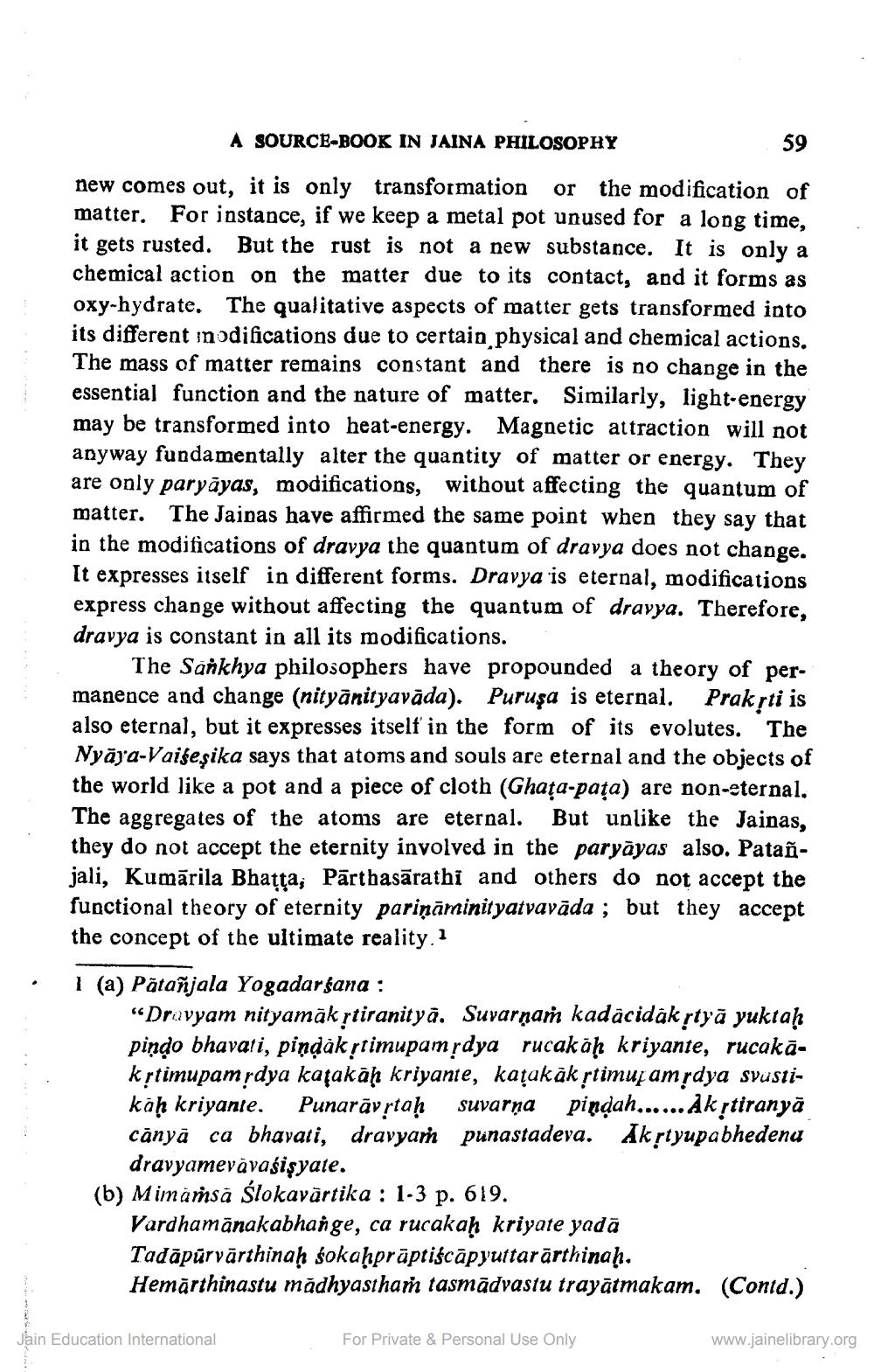________________
A SOURCE-BOOK IN JAINA PHILOSOPHY
59
new comes out, it is only transformation or the modification of matter. For instance, if we keep a metal pot unused for a long time, it gets rusted. But the rust is not a new substance. It is only a chemical action on the matter due to its contact, and it forms as oxy-hydrate. The qualitative aspects of matter gets transformed into its different inodifications due to certain physical and chemical actions. The mass of matter remains constant and there is no change in the essential function and the nature of matter. Similarly, light-energy may be transformed into heat-energy. Magnetic attraction will not anyway fundamentally alter the quantity of matter or energy. They are only paryāyas, modifications, without affecting the quantum of matter. The Jainas have affirmed the same point when they say that in the modifications of dravya the quantum of dravya does not change. It expresses itself in different forms. Dravya is eternal, modifications express change without affecting the quantum of dravya. Therefore, dravya is constant in all its modifications.
The Sankhya philosophers have propounded a theory of permanence and change (nityānityavāda). Puruşa is eternal. Prakrti is also eternal, but it expresses itself in the form of its evolutes. The Nyāya-Vaiệeşika says that atoms and souls are eternal and the objects of the world like a pot and a piece of cloth (Ghața-pața) are non-eternal. The aggregates of the atoms are eternal. But unlike the Jainas, they do not accept the eternity involved in the paryāyas also. Patañjali, Kumārila Bhatta; Pārthasārathi and others do not accept the functional theory of eternity pariņāninityatvavāda ; but they accept the concept of the ultimate reality. ?
•
1 (a) Pātañjala Yogadarśana :
“Dravyam nityamāk rtiranityā. Suvarnam kadācidāk rtyā yuktaḥ piņạo bhavati, pindak știmupamrdya rucakāḥ kriyante, rucakākřtimupam ydya kajakāḥ kriyante, kațakāk stimujamydya spustikāḥ kriyante. Punarāvrtaḥ suvarņa pindah...... Akştiranya cānyā ca bhavati, dravyar punastadeva. Akrtyupabhedena
dravyamevāvašisyate. (b) Mimaṁsā ślokavārtika : 1-3 p. 619.
Vardhamānakabhange, ca rucakaḥ kriyate yadā Tadāpārvārthinaḥ śokahprāptiścāpyuttarärthinah. Hemārthinastu madhyastham tasmādvastu trayātmakam. (Contd.)
Jain Education International
For Private & Personal Use Only
www.jainelibrary.org




